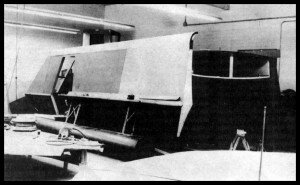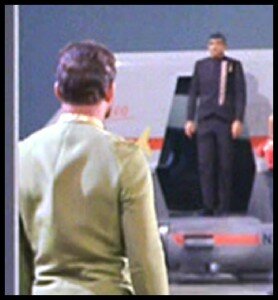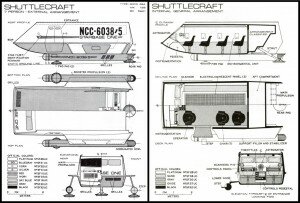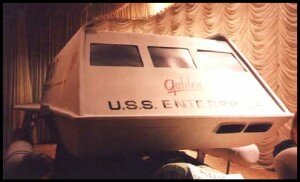I am very happy to report that The Galileo Restoration won the auction and Galileo has a new home. More details to follow!
Alec Peters

I am very happy to report that The Galileo Restoration won the auction and Galileo has a new home. More details to follow!
Alec Peters
The Galileo Restoration is proud to have Starfleet International, the Star Trek Fan Association, on board as our partner. Starfleet is the biggest Star Trek fanclub in the world. Starfleet will be assisting on spreading he word about what we are doing. If we acquire Galileo, then Starfleet’s assistance will be a huge asset to our cause.
Thanks to David Blaser, the head of Starfleet, for being a true pro and bringing Starfleet on board!
The original filming set of the Galileo has been in storage in Ohio for the past twenty years. While an extensive restoration was undertaken in the 1990’s, the Galileo is in very bad shape.
This Galileo Restoration Project intends to acquire the Galileo, put it in a non-profit 501 (c) (3) corporation, run by a team of professionals. If we successfully acquire the Galileo, we will transport the Galileo to the chosen restoration facility. We expect restoration costs to be over $ 100,000 to get it to its original state. We will then have a fundraiser on Kickstarter to raise the money to restore Galileo.
Note that we are a team of dedicated, experienced professionals (who just happen to be total Star Trek geeks too). Fans can be assured that we will:
1) Restore the Galileo in the most professional and accurate way possible.
2) Make the Galileo available for fans to see and tour the Galileo for the 50th Anniversary of Star Trek.
3) Find a permanent home for the Galileo in a museum that will guarantee she is always available for public viewing in a safe, indoor environment.
OUR TEAM
Alec Peters is the founder of Propworx, which has handled studio prop & costume auctions for Battlestar Galctica, Stargate, Iron Man and Iron Man 2, as well as the official CBS licensed Star Trek auction. Alec is an attorney by training who is smart enough never to have practiced and has started 5 companies. Alec assists CBS with the Star Trek Archive.
Adam Schneider is Principal at Deloitte and one of the premier collectors of Star Trek screen used ship filming miniatures. He owns over a dozen miniatures including an original Deep Space Nine filming model, Zefram Cochrane’s Phoenix filiming miniature from First Contact, and the Space Dock holding the Enterprise A in The Motion Pictures.

|
| Gene Winfield |
At this point, things get interesting. The model company “AMT” offered to build the full-scale mock-up of the shuttle in trade for the model kit rights (AMT had the license for the Enterprise and Klingon ship models). They turned to custom car designer Gene Winfield, who was head of their “Speed & Custom Shop”.
“We built the [Star Trek] shuttlecraft, full-size shuttlecraft that was two separate units,” Winfield said. “One would be a complete exterior, full size. Then we built the complete interior. This interior had what we called ‘wild’ walls. What you do is you make the walls in four-foot sections on wheels so you can put up one wall and they could film the actors sitting on the seats and whatnot.

|
| Matt Jeffries |
Note that he says “built” the shuttle, not “designed” and built. There apparently was some connection with AMT and/or Gene Winfield with industrial designer Thomas Kellogg. He is known for designing the Studebaker “Avanti” – its front end styling similar to the Galileo’s front end). Here is his shuttle design:
It should be noted that in an interview, Matt Jefferies says that Winfield designed the shuttle, but Thomas Kellogg’s obituary also states the he designed the shuttle. I believe it was a collaborative effort, with Jefferies “utility vehicle” selected as a base design by Kellogg, who was working under Winfield; and Jefferies putting the finishing touches on that design. Winfield’s department constructed the finished design.




The Galileo model kit actually came out in 1974, 5 years after Star Trek was cancelled! The entire line of “Star Trek” models would prove to be very profitable for AMT!

In 1989 for $3000, the Galileo was purchased by Lynne Miller of Akron, Ohio. Her plan was to restore the shuttle once again; ultimately to display it at the National Air & Space Museum alongside the shooting model of the Enterprise. To help raise money for the project, she displayed the shuttle at the “LaGrangeCon” convention in Cleveland, sponsored by the Akron chapter of STARFLEET, the International Star Trek Fan Association, called the “USS LaGrange” and Vulkon conventions.
Commemorative t-shirts were sold to raise funds, and con attendees could see the Galileo and the beginnings of her restoration under a tent outside of the con hotel.
Members of her restoration team included Tim Gillespie and William “Buck” Krause. They along with Lynne are members of the USS Lagrange. Here’s a video put together by the “Galileo Restoration” team, documenting her condition before her transport to Ohio, and showing the start of her restoration.
Here are pictures of the Galileo kept and worked on in a hangar at the Akron-Canton Airport in 1992. The 2nd pic shows prop-maker Ed Miarecki (l) visiting with restoration team members Buck Krause (c) and Tim Homa (r).
Bill Krause led the previous restoration team, and here is his review of the story after the Galileo left California in 1991:
In the summer of 1991 a private owner from Akron, Ohio had purchased and shipped the prop from the desert storage lot in Palm Springs to an aircraft hanger in Akron via a flat bed truck. Tom Wilson and myself were hired from the outset to recondition the prop (mainly just the repaint and lettering) – before we had seen the actual state of the craft when it arrived. Upon inspection, it was clear that a total restoration was necessary. It had been stored outside since its release from the studio many years earlier and time, weather and abuse had taken its toll on the mostly wooden prop. It was apparent that several previous restorations had been attempted in areas – but were mainly cosmetic. Luckily – the main framework had been left untouched.
In September of 1991 – the Galileo began a two-year project to methodically restore her to studio-original condition. The wood framework was stripped and replaced from bow to stern, the metal frame blasted and re-primed, the exterior panels re-cut and mounted in marine-grade plywood, new floorboards installed in the interior. The work was staggering, but necessary – the woodwork was totally decayed and structurally unsound.
The port side panel (masonite original) from just above the main door all the way back to the stern and just above the port wing/nacelle was left original. The stern was also in fairly good condition with the exception of the impulse engine area which was completely gone along with the roof. The owner had also contracted Gene Winfield (the original builder) to fabricate some new pieces. Two new plexi nacelle domes (clear) and the metal baffle shrouds were received the following year. An hurried attempt to make her presentable for the local convention (LagrangeCon 91) was her last public appearance to my knowledge.
Work continued on when we moved the craft to its own private hanger at Akron-Canton airport. Both nacelles were constructed almost entirely in steel and extremely heavy. They were transported individually from the main hull and remained that way in the hanger while work progressed. They were designed to be easily removed and replaced and basically slid into position on several steel pins (in the wing root area). The door mechanism was pretty complex and was fabricated from desk parts – mainly the track system for the upper door halves. The lower door/porch was opened by an operator inside using a large steel lever. There was never any intention of building an interior since this almost-full scale prop never had one. Outside of possibly carpeting the floor and dressing the interior wall opposite the hatch, the port side interior was all door mechanism and track. You could not stand upright inside the craft. If one were to be built – that was a later concern. One the trickiest areas to rebuild was the impulse deck – luckily what remained of the delicate lower lip provided enough patterns to reconstruct it.
By September 1993, the two man team was exhausted and the owner short on funds. The Galileo was was brought back to about 85% completed and a stone’s throw from seeing it rolled out in a fresh coat of paint and detailed out with its 1701/7 lettering. We parted company when the owner began discussions with another party interested in purchasing and or finishing it off.
Bill’s Facebook photos of the Restoration work his team did is .
The Video from the Original Restoration in he 1990’s